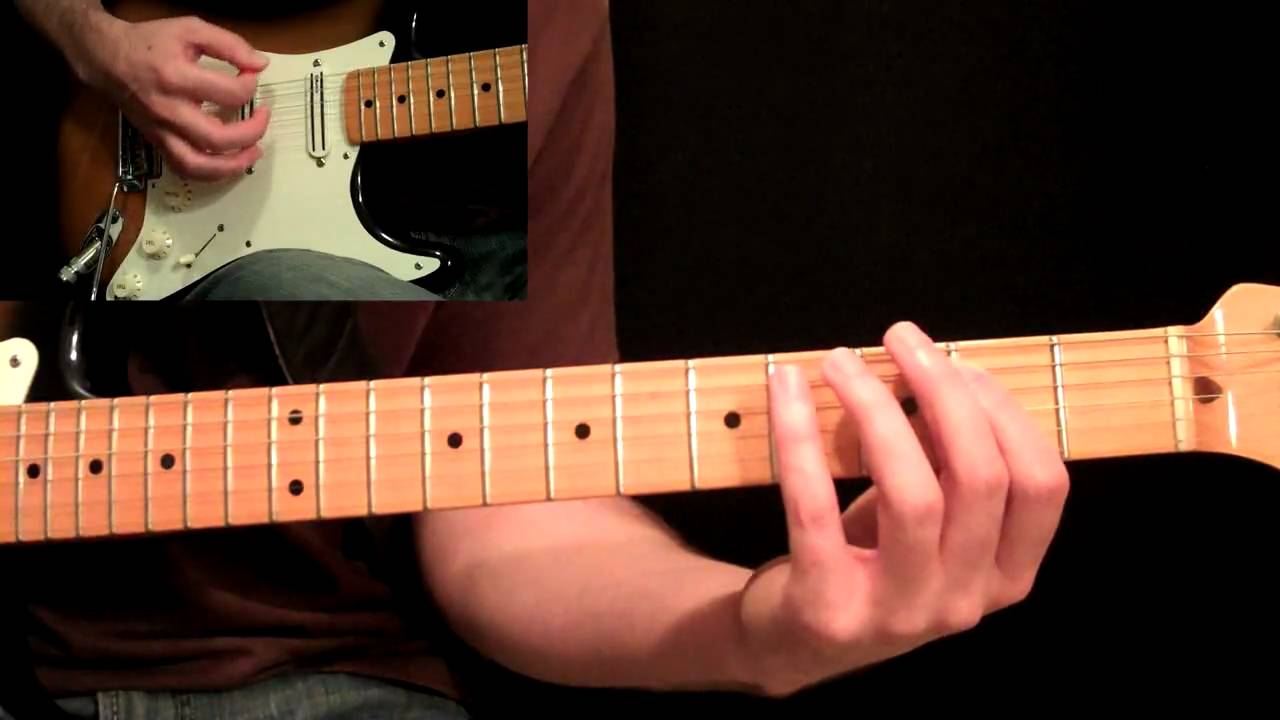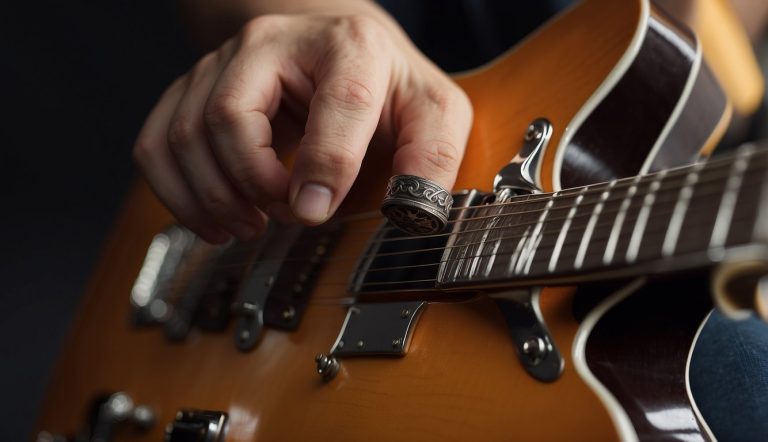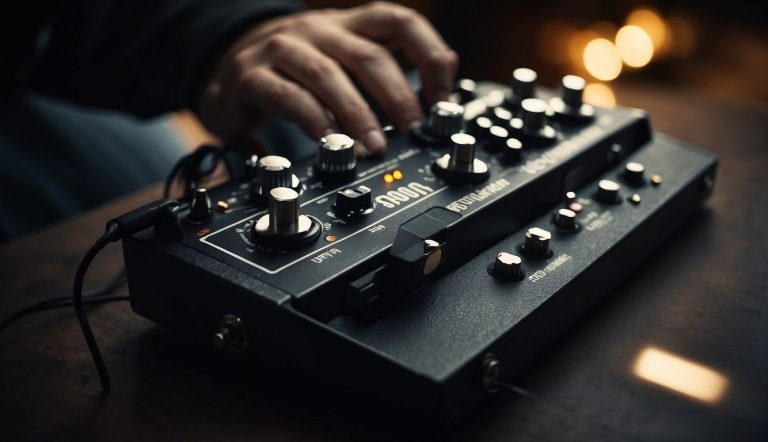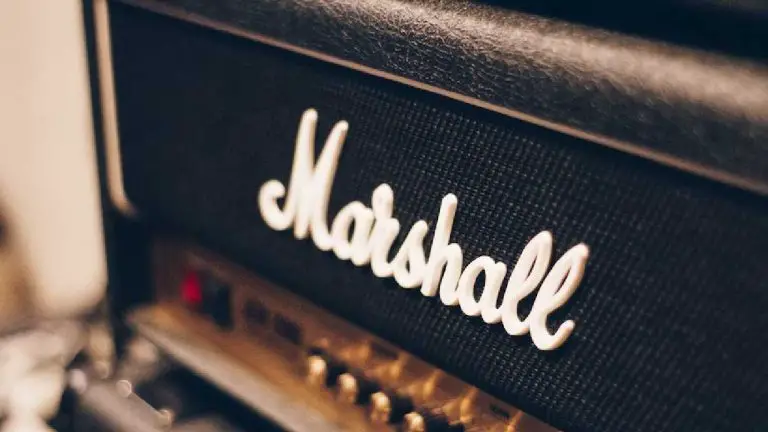How to Learn the Guitar Fretboard: Quick Guide to Mastering Notes
Learning the guitar fretboard is a cornerstone of mastering the instrument. Knowing where each note is located and how they connect across the fretboard gave me a sense of freedom and confidence in my playing.
It’s not just about memorizing the notes but understanding the relationship between them. This allows for improvisation, effective practice, and a deeper connection with the music.
I remember starting with the basics, learning the names of the strings and the natural notes. Initially, it felt like a daunting task, but by incorporating certain techniques and persistent practice, it became second nature.
Moving on, I began recognizing patterns and shapes, which helped me visualize the fretboard. This was key in advancing my skills from simply playing chords to crafting soulful solos.
Key Points
- Understanding the fretboard improves musical improvisation and confidence.
- Recognizing patterns and shapes on the fretboard aids in memorization.
- Consistent practice is essential for mastering the layout of the fretboard.
Techniques for Memorization
When learning the guitar, recognizing patterns on the neck and forming strong mental associations with notes is vital. The memorization process can be made easier with proven strategies that play to our visual and mnemonic strengths, along with disciplined practice routines.
Visual Patterns and Shapes
I find that visualizing the fretboard in terms of patterns and shapes is incredibly helpful. Every major and minor scale can be represented as a shape, making it easier to remember their positions.
To memorize notes on the fretboard, start with locating the root notes and then observe the patterns they form.
Here’s a basic pattern for the major scale starting on the low E string:
- Open string E (root)
- F (2nd fret)
- G (3rd fret)
- A (5th fret)
- B (7th fret)
- C# (9th fret)
- D (10th fret)
- E (12th fret)
The bolded notes represent the octave shapes beginning from the open E string. Familiarize yourself with these visual patterns as they repeat all over the fretboard.
Utilizing Mnemonics
Mnemonics create strong associations to aid memory. To memorize the open string notes, for example, I use the phrase “Eddie Ate Dynamite, Good Bye Eddie”. Each word starts with the same letter as the open strings from the 6th string to the 1st: E-A-D-G-B-E.
Develop similar mnemonics for each string, and you’ll find that they provide mental shortcuts, allowing for quicker recall of the notes under pressure.
Practice and Repetition Strategies
Practice is fundamental in committing the fretboard to memory. A routine that I repeat daily is selecting a note—say C—and playing it in all octaves across the neck.
This not only helps me memorize where all the C notes are but also reinforces the visual shapes and patterns in my mind, especially when I connect them with scales.
Repeating this exercise with different notes incrementally leads to a complete understanding of the fretboard.
Exercises and Practice
In my journey to master the guitar fretboard, I’ve found that structured exercises and consistent practice are invaluable. Here are specific ways I approach scales, chord progressions, and note identification to internalize the layout of the fretboard.
Scale Practice
I begin with the C Major scale, as it’s comprised of the natural notes with no sharps or flats. I play the scale across a single string to understand the linear progression of notes, and then across multiple strings to familiarize myself with the fretboard’s geography.
Using a metronome helps me maintain timing and increase speed gradually.
- Practice Routine:
- Play the C Major scale starting on the open 3rd (G) string.
- Ascend and descend the scale, gradually increasing the tempo.
- Incorporate the pentatonic and chromatic scales for variety.
Chord Progression Exercises
Chord progression practice helps me learn the shapes of chords and how they connect across the fretboard.
I practice common progressions like I-IV-V in the key of C (C, F, G) and pay close attention to barre chords which are movable and versatile.
- Chord Transition Drills:
- Strum a C chord, then transition to an F barre chord, followed by a G chord.
- Play arpeggios within each chord to isolate and play individual notes.
Note Finding Challenges
To sharpen my fretboard knowledge, I challenge myself to identify note names quickly across all strings.
I’ll pick a note, such as E, and find it in various places on different strings. I also memorize the open strings (E, A, D, G, B, E) as reference points.
- Fretboard Navigation Exercise:
- Set a timer for 1 minute and find as many C notes as possible.
- Increase the challenge by locating sharps and flats.
Advancing Your Skills
When I aim to improve my mastery of the guitar fretboard, I focus on three main practice areas that boost my playing precision, understanding of music, and creative expression.
Playing With a Metronome
I always start with a metronome to develop my timing and speed. It’s crucial to begin at a slow tempo and gradually increase it.
Here’s my usual practice routine:
- Choose a scale: I select a scale to work on, often starting with the minor pentatonic.
- Set the metronome: I begin at a comfortable speed where I can play each note cleanly.
- Play the scale: I play the scale in ascending and descending order, ensuring I hit each pitch exactly in time with the metronome clicks.
- Increment the speed: Once I can play the scale flawlessly, I increment the speed by a few BPM (beats per minute) and repeat.
By consistently practicing with a metronome, I’ve noticed significant improvements in my ability to maintain steady rhythm patterns and increase my playing speed without sacrificing accuracy.
Learning Songs
Learning songs is another effective approach to advance my fretboard knowledge. I follow these steps:
- Choose a song: I pick a song that challenges me slightly more than my current skill level.
- Break it down: I dissect the song to work on specific parts, focusing on sections with interval jumps or quick changes.
- Tablature vs. Notation: Depending on my focus, I may use tablature for finger positioning or standard notation for a deeper understanding of the pitches and rhythm.
As I learn new songs, I naturally memorize different parts of the fretboard, and my ability to recognize octaves, semitones, whole steps, and intervals on the fly gets better.
Improvisation and Soloing
Improvising and soloing push my creativity and understanding of the guitar fretboard. I follow these guidelines:
- Learn scales: Mastering scales is foundational for soloing. I start with the major and minor scales and incorporate modes over time.
- Practice over backing tracks: Playing with backing tracks helps me apply the scales musically.
- Focus on intervals: I practice jumping between intervals, starting with half steps and whole steps, and gradually expanding to larger intervals, both ascending and descending.
- Use octaves: I utilize octave shapes to navigate the fretboard and create melodic lines.
My improvisation is a testament to how well I know my instrument. The more I practice, the more intuitively I can express myself through soloing.
Frequently Asked Questions
In this section, I’ll cover some common queries about mastering the guitar fretboard, with tips on exercises, methods, and tools to help you become more familiar with the notes.
What are some efficient fretboard memorization exercises for beginners?
One effective exercise I recommend for beginners is to choose a note, such as C, and find it on all six strings across the fretboard. This helps build a mental map of where each note lies.
What is the best method for improving my fretboard knowledge as I play?
I found that practicing scales and saying the note names out loud as I play them is immensely beneficial. This reinforces the connection between the physical location of the note and its musical identity.
Can you suggest a way to master the notes on the fretboard quickly?
I suggest integrating learning into your daily practice by using flashcards with fret numbers and trying to name the notes. Alternatively, applying stickers with note names to the fretboard can also be a quick visual aid.
What are the key steps to decoding and reading a guitar fretboard?
Start by learning the note names on the low E and A strings since they form the basis for bar chords. Then move on to identifying octaves to quickly map out the rest of the fretboard notes.
How can I systematically learn the fretboard notes across all 24 frets?
I advise dividing the fretboard into sections and focusing on one section at a time. Learn the notes in the first four frets, then the next four, and so on, until you’ve covered all 24 frets.
Is there a simple guide or tool to help memorize the guitar fretboard?
Yes, the Fretlight guitar is one tool that visually displays note positions on the fretboard, aiding in memorization. There are also apps and software that provide interactive fretboard diagrams and exercises.






